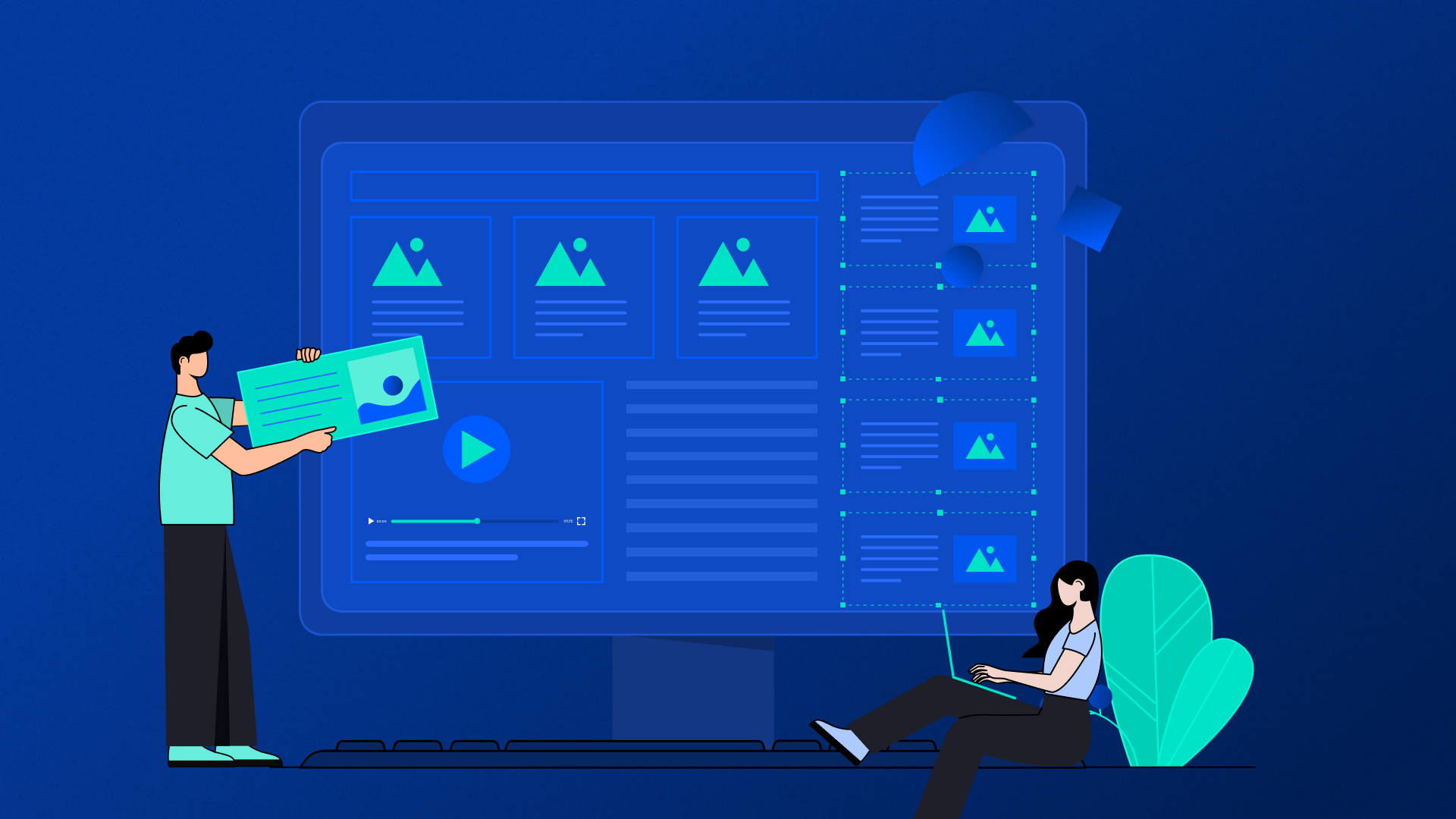Quick Summary: You design and develop a product for your users to love using, but what if it fails to attract your core customers? That is why A/B testing is crucial to ensure you make an informed decision. Ultimately, you must not completely rely on intuition; rather, you should be focusing more on innovation. We have made your work easy in this detailed guide on the power of A/B testing in product design and how it can be a game changer in creating a design backed by users' behavior.
When we design a mobile or website , we want it to go well with users and resonate with them. Ultimately, your digital product carries the ability to make or break your initiatives. It can be good or bad; it all depends on whether your users love using your product. A/B testing in product design is one crucial factor that helps you design products for users approved by the users themselves. Yes, that’s the beauty of A/B testing. Confused…? You must be thinking a lot of things together and going through plenty of questions, like;
- What is A/B testing?
- Why it’s crucial
- How to implement A/B testing?
- What are the key elements of it
- What should be kept and avoided while in A/B testing, and many others?
We shall explore everything in this guide —all step by step. But let us start from the basics.
What is A/B Testing in Product Design?
A/B testing, also known as split testing , in product design is when you compare two or more versions of the product to identify which one performs better. It’s a data-driven approach that helps you make informed decisions based on user behavior and insights, rather than relying on assumptions. Here, A often refers to the original, while B is the variation of A. It is a statistical analysis. By analysing user interactions with both versions, A/B testing provides valuable statistical evidence, making it an essential tool for optimizing design and enhancing user experience.
Why A/B Testing in Product Design —the Benefits?
A/B testing plays a major role in scaling your business and making it a market leader in the industry. We know how bad user experience can ruin the research and development efforts. You can choose A/B testing in the product designing stage to avoid such long-term losses that lead to bigger financial losses. Here are the top benefits of A/B testing, giving ultimate reasons why A/B testing is crucial in product design.
Improves User Experience (UX)
When you design a product, you have plenty of elements to consider. For example, you have navigation menus, page layouts, onboarding flows, and more, which you can test through A/B testing. You can create different design variants and learn which one works well with your users. Testing will help you make your product design user-friendly and allow you meaningful improvements.
Increases Conversion Rates
When you design a product for users and users, select that, it will impact conversion rates. For example, you have to design the product that your users love using. Through A/B testing, you can optimize the design and other key elements like CTA, color, palette, forms, and checkout process. There are many findings that suggest a well-optimized product design can increase by 20% clicks.
Reduces Risk
When you launch a new product in the market, it carries a lot of risks. However, a/B testing will help you experiment with your creation and decide which product design is well suitable for the audience. You can effectively minimize risks by removing the elements from the product design that might have a negative impact on user engagement.
Data-Driven Design Decisions
Conducting A/B testing helps you get rid of the guesswork. You get data and feedback directly from your actual users. Based on the data, you can confidently choose the best design option and create features and functionalities that resonate with your users. When you have a data-driven design product, it works in the long run.
When & How to Implement A/B Testing in Product Design?
The best thing about A/B testing is that you can use it to decide the smallest things, like colors, fonts, etc., to the whole product and even in day-to-day life. It has a positive impact on the product because you can choose what’s the best for your product design. But now, the question arises of how to implement it. Well, we discussed the step-by-step process of implementing A/B testing in product design.
Step #1: Pre-requisites
Here in this, you gather all the stakeholders of the product design to make sure everyone understands the design process. Your key stakeholders are the manager, marketing team, developers, and designers/researchers who will give you resources for A/B testing.
Step #2: Define the Objective
Once you have all the key stakeholders together, the next task is to determine what to expect from the product design. It is an important step of A/B testing in product design as it will bring clarity to your final goal.
Step #3: Build a prototype
Now you have the team and the objective, so now you can head on to the next step of A/B testing in product design. Here, you build a prototype dis, discuss it with your team, and choose the best changes that will give the best outputs in less time and effort.
Step #4: Define the test metrics
Always divide test metrics into primary and secondary metrics on the basis of the impact they have on the A/B testing. Primary metrics define the direct effect, while secondary metrics define who is indirectly influenced.
Step #5: Run the experiment
It all comes down to this step. In this step, you deploy your prototypes for A/B testing. Here, users will interact with the different versions that you randomly assign to them and measure and compare their statistics.
Step #6: Analyze the results
Once you have the statistics of all the released prototypes, you hope to move on to the next step, which is to analyze the results. Check if the changes made provided better results or not, as it will help you determine the best version.
Step #7: Draw conclusions
Now all the steps are over, and we are on the final step of choosing which version had better results. However, inconclusive results will also help in improving the design over a period of time. Make sure the testing doesn’t last longer than 3 weeks cause that'll be useless.
Types of A/B Testing in Product Design
Understanding the type of A/B testing will help you ensure your product design is perfect and ready to launch. However, you must ensure whether you want to test a certain page, CTA, whole product, or others. for your understanding, we have mentioned the type of A/B testing. Let’s explore.
Split testing
Split testing allows you to test separate versions of the same product and helps you analyze which one does better or performs well among customers.
Multivariate testing
If you are designing web pages, multivariate testing will help you analyze the different variations of webpages. That means you create two variations of products and conduct a/B testing to choose the right combination. The goal year is to ensure you use the product with maximum clicks, conversion, and engagement.
Multi-page testing
If you want to conduct a/B testing for your web pages, creating multiple variants and multi-page testing will help you do it. You make numerous or as many pages as you want to test with various features and functionalities. The goal area is to ensure and analyze the elements such as the CTA button, navigation, checkout, and others that resonate with your users and their buying behaviors.
Trapdoor tests
Most businesses conduct trap door testing to ensure you get the idea validated and your user loves your product. It is done by various methods. For example, you may create a fake door test and allow users to choose which one they see first and use first.
Challenges of A/B Testing
A/B testing is conducted for good causes, but it has some drawbacks, which can result in completely different outcomes and unreliable results. However, you can overcome these challenges by having an expert UIUX design partner to work on your a/B testing project for product design. Let’s first understand the top challenges you might face while conducting less testing for product design.
- Hypothesis: when you conduct a/B testing without having a clear hypothesis, you do not get the actual results. That means you never know what to improve and which part of the product needs to be addressed or kept in focus.
- Sample size: Conducting a/B testing can often bring unreliable results. This is possible when the sample size is too small.
- Overwhelming A/B testing: when you have multiple things to test through a single SSB testing, you will never know which item is responsible for causing issues and what to improve. Even though I tap saving your time, it never does in reality.
Final thoughts
In this article, we have explored all the basic elements of a/B testing to help you determine which product will resonate with your users. Having gone through this article, you must have gained some confidence to choose the right product design that will help you improve your products, increase engagement, and grow your business. However, if you want to make a design or product verified by less testing, TheFinch Design can help. Contact us today with your product idea, and let us make it functional and profitable for you.
Drashti Talajiya
Business Development Head
Drashti Talajiya is the Business Development Head at TheFinch Design, where she bridges creativity and strategy to drive meaningful client partnerships. Passionate about transforming ideas into impactful solutions, she thrives on collaboration that brings visionary designs to life.




















